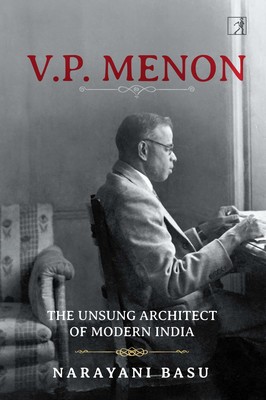This book is V.P. Menon’s own story, transcribed in his own words from a series of recordings made with his superior, Harry Hodson, in the winter of his life in Bangalore in 1965.
Not many people burn down their school and go onto successful careers. V. P. Menon was the one lucky exception this book brings to mind. Every time V. P. Menon cast away from his modest past, he got a lucky break: a series of accidents brought him to the highest bureaucratic office possible for an Indian in colonial India.
This book is V.P. Menon’s own story, transcribed in his own words from a series of recordings made with his superior, Harry Hodson, in the winter of his life in Bangalore in 1965. This book supplements the two more scholarly books V.P. Menon wrote of this period in history (‘The Transfer of Power’ and ‘The Story of the Integration of the Indian States’). As has been pointed out by others, the uncritical dependence on these papers in this book affects the quality of the biography and the historical content.
To read this book to simply stir up more controversy between Patel and Nehru, to learn of V. P. Menon’s inevitable preference for Patel’s leadership (with whom he had great comfort in the working of the States Department), and his clear antipathy of Nehru’s leadership, anecdotes that show up Nehru’s insecurities, these other facets do come through. In the rough and tumble of that contested time, well-documented by now, there is little that is new or the font of an unusual conspiracy.
V.P. Menon knew and worked with all the senior leaders of the time who came to rely on his constitutional drafting, institutional memory, and blunt speech. Even the last Viceroy Lord Mountbatten, and not least Lady Edwina, who eventually took a shine to him and greatly supported the work of the States Department in integrating the princely states.
We are given all this in V. P. Menon’s original voice, which deserves to be preserved for too many reasons. A voice muted for most of his professional life, given his humble background, and the need to work up the ladder in sensitive departments with the very colonial masters who made history. It was only by 1941, with the encouragement of Harry Hodson as Reforms Commissioner, that V.P. came into his own.
A more contemporary touch, closer to our time, is the frequent and sympathetic reference to the ruler of Sarila, whose biography is quoted extensively (‘Once a Prince of Sarila’). Narendra Singh of Sarila was ADC to Mountbatten, and their paths would have crossed frequently. Sarila’s observations on the princely order are quite descriptive and accurate.
Based on this read, I would rate V.P. Menon’s contribution to the final transfer of power, a plan he submits first to Viceroy Linlithgow in 1941, then meeting a 6-hour deadline in Simla to Mountbatten in 1947, as a bigger contribution, than even the integration of the states. Even with the states, the complex, patient, legal work done over a longer period with the 3 problems states, viz. Junagarh, Hyderabad, and Kashmir, as rating much higher value in posterity than the work done with the others, for which he has been publicly credited. The integration of the 565 Princely states was executed well and had many dramas, but for the most part, these were an inevitable outcome of the close and coordinated support of Mountbatten and Patel.
I had wondered why V. P. Menon was not used for other difficult tasks after the completion of the work on the integration of states. This book does answer that question, even as V.P. Menon was given facing-saving sinecures. After Patel’s death, V.P. Menon had lost his benefactor and department, and Nehru had little use for someone opinionated who also knew too much. There were other bureaucrats in spades, mostly from the ICS, even some ex-Dewans, who were available for public service. And there were also people like V.K.K. Menon.
I do not agree with the criticism this book does not do justice to the early days and hardships of V.P. Menon. Frankly, these are less interesting, even to him. He was a self-made man who ran away from his family and home, his history, why flog these to death? The book does come through on his unusual marriage and strained relationship with his sons. V.P. Menon’s single-minded focus on his work to detriment of his family should not be a surprise, even if Indian biographies often bury such awkward details.
While serious historians will question the value of the unexamined recordings that are the heart of this book, biographers should welcome the book. For most of us, the truth lies somewhere in between anyways.

